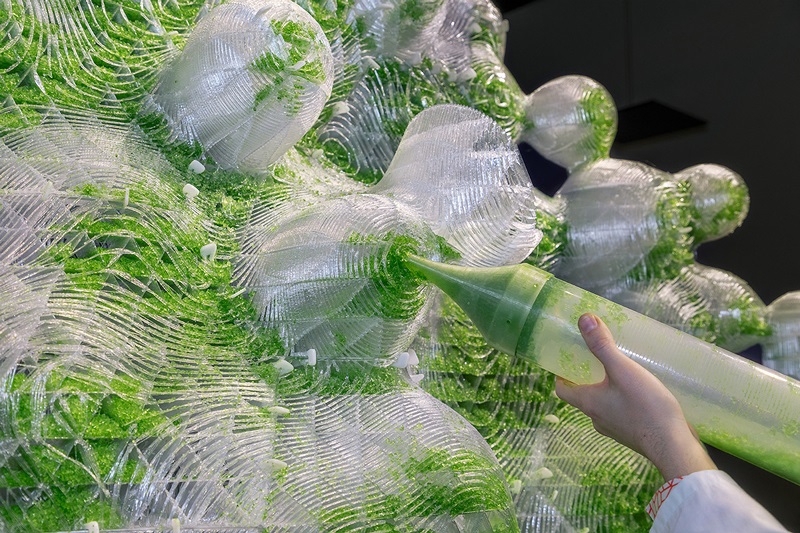
H.O.R.T.U.S. XL Astaxanthin.g is a large scale, high-resolution 3D printed bio-sculpture receptive to both human and non-human life. The project is conceived by Claudia Pasquero and Marco Poletto (ecoLogicStudio) and developed in collaboration with the Synthetic Landscape Lab at the University of Innsbruck.
In the digital era a new interaction is emerging between creativity and the fields of life science, neuroscience and synthetic biology. The notion of "living" takes on a new form of artificiality. This project confronts the dictates of human rationality with the effects of proximity to bio-artificial intelligence. It is developed in "collaboration" with living organisms. Their non-human agency is mediated by spatial substructures developed while studying biological models of endosymbiosis. With a digital algorithm we can simulate the growth of a substratum inspired by collective coral morphogenesis. This is physically deposited by 3D printing machines in layers of 400 microns, supported by triangular cells of 46 mm and divided in hexagonal blocks of 18.5 cm. Photosynthetic cyanobacteria are inoculated on a biogel medium into the individual triangular cells, or bio-pixel, forming the units of biological intelligence of the system. Their metabolisms, powered by photosynthesis, convert radiation into actual oxygen and biomass. The density-value of each bio-pixel is digitally computed in order to optimally arrange the photosynthetic organisms along iso-surfaces of increased incoming radiation. Among the oldest organisms on Earth, cyanobacteria's unique biological intelligence is therefore gathered as part of a new form of bio-digital architecture.
ecoLogicStudio
H.O.R.T.U.S. XL Astaxanthin.g
2019
Related article: Paris, Centre Pompidou, La Fabrique du vivant [The Factory of Life]






